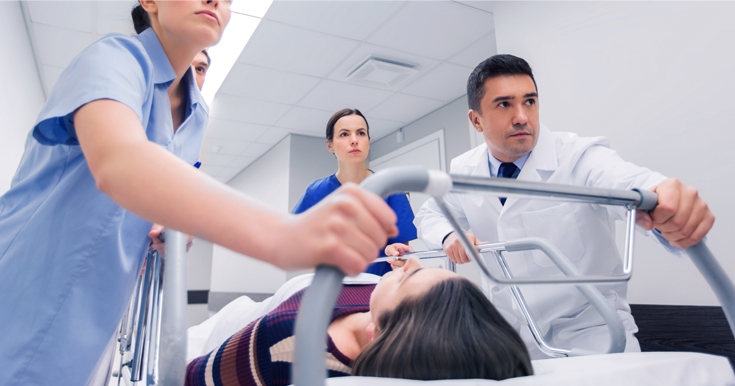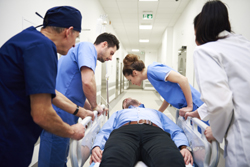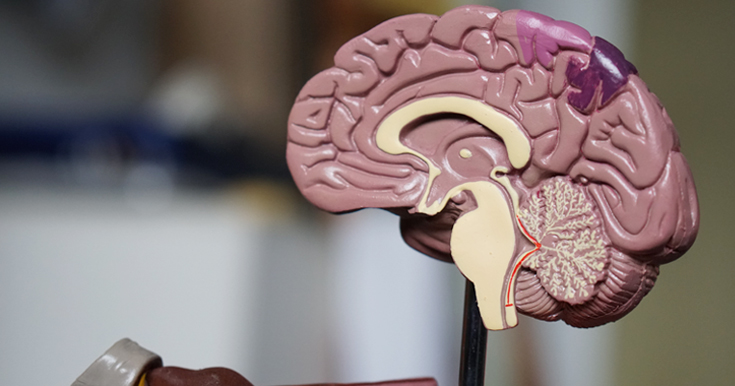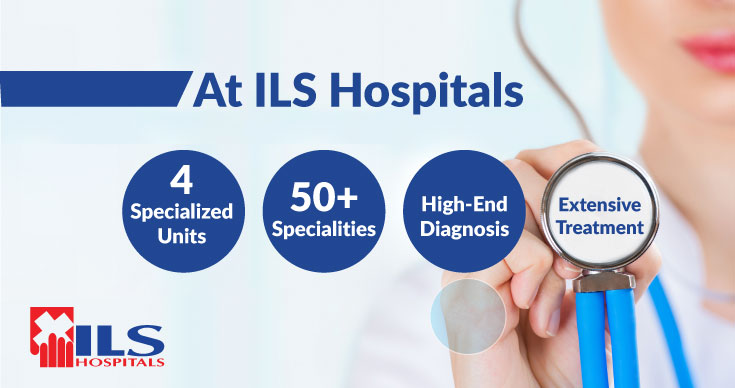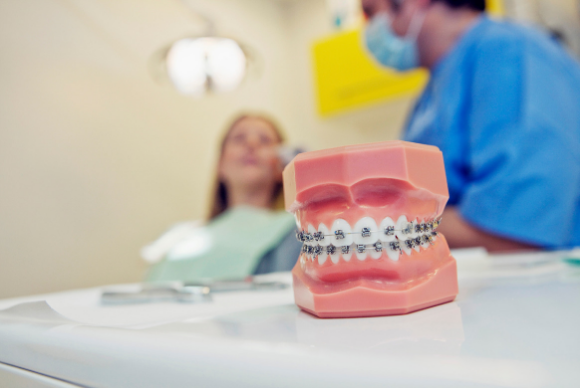How to Choose the Best Heart Hospital in Kolkata
When it comes to the selection of cardiac hospitals, many people have varied opinions. Sometimes, the opinions are valuable, but the other times it adds up the confusion.
If you are looking for the top heart hospital in Kolkata and you are reading this, then you have come to the right place. We have collated some pointers that will help you make the best selection of cardiac hospitals in Kolkata.
5 Points To Choose The Top Cardiac Hospital
Whenever a heart patient is admitted to a cardiac hospital, the patient and the family often consider factors like experienced doctors, facilities, and physical and emotional support. But are these enough to narrow down the best cardiac hospitals?
We will see these and some other factors in the following details:
1 – Team
Cardiac issues are not to be ignored. You always seek and consult a well-experienced and specialised doctor who will understand your ailment and ensure the best treatment for you.
A good hospital is a combined effort of doctors, nurses, and other healthcare and supporting staff. They assure you that you are in good hands.
2 – Position
As said earlier, people give many recommendations about the best cardiac hospitals. Word-of-mouth constitutes the reputation of a heart hospital. But apart from people’s opinions, do a little research on the prestigious awards and recognitions given to the hospital by notable medical bodies.
The top heart hospital in Kolkata embodies skills, recognition, best treatment, and a good experience for the patients and their families.
3 – Top-Notch Technology
It is a differentiating factor for any hospital. The best cardiac hospital pays a considerable amount of time and energy on the latest technologies available for cardiac treatment.
Apart from the treatment, look for hospitals employing faster technology to ease documentation and hassle-free medical procedures.
4 – State-Of-The-Art Cath Lab
The best cardiac hospital uses enhanced technology and infrastructure. Visual imaging tests are essential constituents for diagnosing cardiac issues. Hence, a hospital with a well-establish lab incorporating up-to-date technologies and safety is the best among the rest.
Moreover, no one likes delays in medical reports. Ensure that the labs are well-equipped to diagnose and report at the earliest time.
5 – Cardiac OT
Last but not least is the operation theatre of the cardiac hospital. For an outsider, finding the details about the cardiac OT in a hospital might be difficult. In such cases, share your concerns with your doctor. He/She will address your queries and guide you through the OT procedures.
Conclusion
The top heart hospital takes care of its cardiac patients in the nicest possible way. A reputed hospital is the one with accurate treatment infused with immaculate care and advice.
The best practices of the hospital are reflected in how it attends to its patients. A hospital is deemed well if the patients are content with medical and emotional treatment.
Let’s not ignore the red flags of your cardiac health. Consult the best and experienced doctors to seek their advice and expertise, visit the top heart hospital in Kolkata – https://www.ilshospitals.com/.
Know the Five Steps of Emergency Care
We live in a world of uncertainty and prone to sudden ailments, accidents, or injury. It is at this time when we need emergency services. Emergency care is an essential part of our healthcare system. The patients in emergency care get immediate treatments compared to other patients. In an Emergency Department, there is a specific team of physicians, nurses, and healthcare professionals to provide urgent care to the patients. There are five necessary steps of Emergency Care:
1 – Triage
The first step involves sorting by understanding the severity of the patient’s condition. After the patient’s arrival, an assigned nurse will collect the medical history and perform the necessary examinations, like checking the pressure, pulse rate, and relating to the symptoms, if required. After the initial medical examination, the nurse will assign a priority level like Resuscitation, Emergency, Urgent, Semi-urgent, and Non-urgent, for the patient.
Only one member can accompany the patient to the emergency care department. In emergency care, the patients get the treatment based on their emergency.
2 – Registration
Registration is necessary for the patients in emergency care. A patient’s visit to emergency care may be due to various unfortunate events. Registration will help record the details of the patient. It will be useful for both the patient and also the hospital to have the document. With registration, the hospital authorities can get consent to start on with the treatment/surgery.
Sometimes, severe patients are taken directly for surgery or similar emergency treatment. It will also enable the surgeon/physician to decide on the best treatment for the patient. The specialists who have access to the patient’s room will carry on with their registration process in a serious scenario.
3 – Treatment
After the registration process, the treatment of the emergency care patients begins. A medical practitioner or an attending physician do the minor treatments of the patient. Based on the patient’s condition, he/she gets fluids or medications as recommended with the help of an intravenous line. Other tests like blood-test, urine-test, ECG, X-Ray follow accordingly.
Some test takes longer time to showcase the results, during the time of the stay, the emergency care department makes sure the patients are comfortable and under constant care. Only two attendants are allowed at a time in the patient’s room.
4 – Re-evaluation
The next step starts after the test results of the patients are received. It will decide the patient’s condition if any further treatment is required. At this stage, the physician can also contact the patient’s doctor for any supplementary information. The patient should inform the physician to know about any additional pain or discomfort felt by the patient.
5 – Discharge
The last step is patients discharge. A patient is discharged from the hospital if everything is stable in his/her medical reports. Emergency care must keep the patients healthy when under their observation. They are home-instructions; after discharge from the emergency care, a patient should follow them religiously. After their release from the emergency department, every patient should follow-up with their doctors regarding their health status.
Conclusion
Most emergency hospitals follow these well-organized steps of emergency care. Whenever in need, search for the best emergency hospital in Kolkata. With the knowledge of systematic emergency care rules, you can help those in need and save lives. It is always advisable to understand the processes involved in emergency care for one’s good. If you are in search of the best emergency hospital in Kolkata, then https://www.ilshospitals.com/ should be on your priority list.
Understanding Brain Tumour – Signs, Symptoms and Myths
The human body is controlled by one of the most complex and largest networks of nerves – the brain. Understanding the functioning of the brain is vital to decoding brain tumours. It can be an overwhelming experience, courtesy: the sea of information available. In this piece, we have simplified the definition, listed down the myths and stated the facts.
To begin with, a brain tumour is a mass or growth of unnatural cells in any part of the brain.
Tumours can be broadly categorised into two – noncancerous (benign) tumours and cancerous (malignant) tumours. The cancerous tumours are more complex and can vary in size and implications. In rare cases, the sensitivity and balance of the nerves are compromised resulting in headaches, blindness, facial paralysis, etc. Owing to technology and advancements in medical science, brain tumours can be treated through surgeries and radiation.
Signs & Symptoms of Brain Tumour
The signs and symptoms of brain tumours are dependent on the location of the tumour. This mainly happens because the position determines the complexity of the tumours – some might directly affect the brain tissues while some may affect the peripheral nervous system.
Since different parts of the brain control different parts of the body, the symptoms also differ.
However, some of the common brain tumour symptoms are:
- Seizures
- Speech or hearing impairment
- Vision issues
- Issues in balancing, walking due to numbness in the arms and legs
- Problems with memory, personality changes
- Weakness, nausea and vomiting
To be noted: The symptoms can result from various conditions and don’t necessarily mean you have a tumour. It is strictly recommended to consult with a doctor to assess and process.
Common Myths & Facts
Myth: All non-cancerous (benign) brain tumours are harmless
Understanding the difference between non-malignant and malignant brain tumours can be difficult depending on its grade and stage. What is important to note is some non-malignant tumours can be as serious as the malignant ones. This occurs when the tumour is located in an inaccessible location, such as the brain stem. Thus, even non-cancerous tumours may cause harm if it goes untreated.

Myth: The signs and symptoms of all brain tumours are identical.
The most common and untrue myth that circles around brain tumours is this one – similar symptoms. Different people have different journeys to diagnosis – some may have no symptoms that indicate it is a tumour while others may have grave symptoms.
Myth: A non-malignant brain tumour does not require chemotherapy.
There are a host of factors that are to consider when it comes to chemotherapy. For example, any person’s age and overall condition, and the location and size of the tumour play an important role in determining if chemo is required. In most non-cancerous cases, it is usually not required, but exceptions are always there.
Myth: Once a patient finishes their treatment plan, life goes back to ‘normal’.
For some patients, there comes a day when active treatment ends. That day can bring with it numerous mixed feelings, relief, happiness, anxiety but also uncertainty. The end of treatment does not mean the end of the experience of having a brain tumour and the person may need to adapt to a “new normal” depending on long-term effects the person may have from treatment.
Myth: Brain tumours are rare and do not affect young people.
The number of brain tumours cases in children under the age of 20 has now surpassed leukaemia. Tumours are the third leading cause of cancer deaths in young adults between the age of 20-39. Secondary brain tumors are common than primary brain tumors – cancer begins elsewhere and spreads to the brain.
Myth: Brain Tumours are caused by cell phones and microwaves

Physiologically speaking, this myth makes zero sense as the studies have proved that radio frequency radiation (RFR) affects the skin first and a long way before reaching the brain. Calcium is the best absorber of radiation and thus, the skull protects the brain from the radiation to enter.
Neurosurgery is the medical branch that addresses the conditions related to the brain, spinal cord, and nervous system through surgical procedures. ILS Hospitals is all set with expert neurosurgeons to offer extensive treatment along with Surgical Management of Pain that interferes with the everyday life of the patient. To know more, visit www.ilshospitals.com
যাতনা কাহারে বলে !
হেপাটাইটিস বি এক রক্তবাহিত জীবাণু এবং সারা বিশ্বব্যাপী লিভার রোগের অন্যতম প্রধান কারণ| পৃথিবী জুড়ে প্রায় 30 কোটি মানুষ আক্রান্ত এবং এ সংখ্যা ক্রমবর্ধমান| ভারতবর্ষে গড়ে শতকরা 4 জন এই ভাইরাস বহন করে চলেছেন; অনেকে নিজের অজান্তেই | অতিরিক্ত সংক্রমণ প্রবণতা দেখা যায় তাদের যারা ইনজেকশন ড্রাগ এড্ডিক্ট, যাদের বহু যৌনসঙ্গী আছে আর যারা চিকিৎসা পরিষেবার সাথে যুক্ত|
2016 সালে বিশ্ব স্বাস্থ্য সংস্থা অঙ্গীকার করে সারা বিশ্ব থেকে 2030 সালের মধ্যে হেপাটাইটিস বি কে নির্মূল করার| আজ বিশ্বের অধিকাংশ দেশেই জাতীয় হেপাটাইটিস বি দূরীকরণ প্রোগ্রাম চালু আছে| আক্রান্ত জনগোষ্ঠীর যেহুতু মাত্র শতকরা দশ ভাগ তাদের সংক্রমণ সম্বন্ধে অবহিত, তাই আরো অধিক সংখ্যায় টেস্ট করার ওপর সর্বাধিক গুরুত্ব দেওয়া হচ্ছে| এছাড়াও হেপাটাইটিস বি দূরীকরণ এর জন্য সর্ব স্তরের মানুষের ভ্যাকসিনেশন, চিকিৎসা পরিকাঠামোর উন্নয়ন, চিকিৎসার সর্বজনীক অধিকার এবং সরলীকৃত নির্দেশাবলী জরুরি পদক্ষেপ|
হেপাটাইটিস বি দূরীকরণের উদ্দেশ্যে কাজ করে চলেছেন অগণিত স্বাস্থ্যকর্মী, গবেষক ও জনস্বাস্থ্য বিশেষজ্ঞ| কিন্তু দুঃখের বিষয়, যাদের কথা ভেবে এতো কিছু সেই আক্রান্ত মানুষগুলো পড়ে আছেন বহু দূরে| তাদের আশা, আকাঙ্খা আর অধিকারের নিঃশব্দ বাণী পৌঁছচ্ছে না কারো কানে| এই অসহায়তা আর বঞ্চনার গুরুত্ব শুধু রুগীর সংখ্যা আর মৃতের হিসাব দিয়ে মাপা যাবে না| প্রতিটি মানুষের অভিজ্ঞতা ভিন্ন ও তাঁর নিজস্ব| আজ তাই সময় এসেছে এই আক্রান্ত মানুষগুলোর কথা শোনার|
সমাজবিদেরা আজ প্রধানত তিন ধরণের সমস্যার কথা উপলদ্ধি করছেন :
1. প্রাথমিক সমস্যা : যা আক্রান্ত ব্যক্তির মনোসামাজিক সমস্যা
2. আনুষঙ্গিক সমস্যা : যা আক্রান্ত ব্যক্তির প্রতি সামাজিক প্রতিক্রিয়ার ফলস্বরূপ
3. সুদূরপ্রসারী সমস্যা : এই সামাজিক প্রতিক্রয়া যে ক্ষতি বয়ে আনে
প্রাথমিক সমস্যার মধ্যে প্রথমেই পরে লিভার ক্যান্সার ও লিভার সিরোসিস এর ভয়| হেপাটাইটিস বি রোগ নির্ণয় এক অজানা আশংকায় ভাবিয়ে তোলে; আছে রোগের ক্রমবর্ধমানতা আর অকাল মৃত্যুর ভয়| গুগল ইউনিভার্সিটি তে রুগী হাতড়ে চলেন হেপাটাইটিস বি র তথ্যভান্ডার| আর যত বিদ্যে বাড়ে ততই বাড়ে ভয় ও আতঙ্ক| তথ্য আছে কিন্তু নেই এমন কোনো সার্চ ইঞ্জিন যা দেবে ভরসা| তাই আসে একাকিত্ব, হতাশা আর বাস্তব কে অস্বীকার করবার জেদ| দুশ্চিন্তা ও হতাশা আরো ডালপালা মেলে যখন একদিন সত্যিই রোগের লক্ষন দেখা দেয়|
এর সাথে যোগ হয় আর্থিক চিন্তা| নিয়মিত চিকিৎসা, ঘন ঘন কাজ কামাই, ব্যয়বহুল পরীক্ষা নিরীক্ষা; এসবের দাবি যে অন্তহীন| তার উপর পরিবারের বাকি সদস্যদের পরীক্ষা, তাদের ভ্যাকসিন দেওয়ার ব্যবস্থ্যা – সব তো আর ইন্সুরেন্স দেবে না| আর ভাইরাস ছড়ানোর ভয়| নিজের ই টানা লক্ষ্মণরেখায় গুমরে মরে| বিয়ে নয় সন্তান নয় | শুধুই তুমুল একাকিত্ব |
আনুষঙ্গিক সমস্যা গুলির দিকে এবার দৃষ্টিপাত করা যাক| এতো ঢাক পেটানো প্রচারের আলো তাও মানুষ এখনো ভেবে চলেছেন একসাথে খাবার খেলে, এক চেয়ার এ বসলে, হাত মেলালে, এক গাড়িতে চাপলে সংক্রমণ ছড়াবে| কেউ কেউ আবার ভাবছেন এ ব্যাটা বংশগত রোগে ভুগছে| মানুষের জ্ঞানের পরিধি বাড়লে তো এসব অবৈজ্ঞানিক চিন্তা থাকার কথা নয়| দুঃখের ব্যাপার হলো এ ব্যাপারে চীন এর হাইমেন শহরে এক সমীক্ষায় দেখা গেলো সম্পূর্ণ উল্টো ফল – যত জ্ঞান বাড়ছে তত বাড়ছে ছুৎমার্গতা| তাই শুধু তথ্য নয়, ভরসাটাও জরুরি| এ ব্যাপারে এগিয়ে আসতে পারতেন চিকিৎসক ও স্বাস্থ্যকর্মীরা| কিন্তু তারা নিজেরাই ভাইরাস এ আতংকিত হওয়ায় তাদের সদিচ্ছা রূপ পাচ্ছে না| সংক্রামিতর পরিবারের সকল সদস্যকেই ক্যারিয়ার ভেবে নিলে ভুল হচ্ছে|
কর্মস্থলে দিনরাত চলছে চাপা গুঞ্জন| আইন আছে অনেক কিন্তু তা ঠুঁটো জগন্নাথ| কোনো কোনো দেশ তো দেয় না প্রবেশের অধিকার |
আর তাই দিনের শেষে আসে নীরবতা, আসে একাকিত্ব | বৃহত্তর সমাজথেকে দূরে সরে যাওয়া | মাদুলি তাবিজ, তুক তাক আর জড়িবুটির অন্ধগলির খোঁজ চলতে থাকে | ধেয়ে আসে অপরাধবোধ|পাপের ভোগ না কর্মফল| নিস্তেজ মন ভাবে এ জীবন মূল্যহীন|
আজ 28শে জুলাই ওয়ার্ল্ড হেপাটাইটিস ডে তে আমরা যখন আলোকিত আলোচনাসভায় বসেছি, তখন আমাদের চেতনায় থাকুক এই মানুষ গুলোর না বলা কথা আর অজানা উপলদ্ধি| ওষুধ, পরীক্ষা আর ভ্যাকসিন এর সাথে প্রেসক্রিপশন এ জায়গা করে নিক ভালোবাসা, মমত্ব আর সহানুভূতি | গবেষকরা ফাঙ্কশনাল কিওর এর সাথে আবিষ্কার করুন ফাঙ্কশনালি প্রোডাকটিভ লাইফ কিভাবে বজায় রাখা যায়| সমাজকর্মীরা এগিয়ে আসুন সৎ পরামর্শ দিতে যাতে হেপাটাইটিস বি আক্রান্তরা বিষাদ কাটিয়ে যোগ দেন জীবনের মূলস্রোতে| সমাজবিদেরা আলোকপাত করুন মনোজগতের গহীন বনে; যে আলোর ছটায় দূর হয়ে যায় ভয় অস্থিরতা অনিশ্চয়তা| সর্বোপরি দেশচালকেরা নিয়ে আসুন বিশ্বাসের বাতাবরণ|
সবাইকে নিয়ে শুরু হোক নতুন ভোর!
Written by : Dr. Sanjay Banerjee
What Are Multispeciality Hospitals And How Are They More Beneficial Than General Hospital
Even though we all thrive to stay healthy, staying disease-free is always not so easy in reality. Often you need to go to the hospital and clinics to seek consultation from the doctors and get medical screening at the diagnostic centers or pathology labs. While you look for the best hospital, you are certain to come across 2 types of hospitals, general and multispeciality hospitals. Today, we will define what are multispeciality hospitals and how they are more beneficial than general hospitals.
General hospitals are a non-specialized healthcare provider that offers primary and general treatment for patients with all types of medical conditions. Multispecialty Hospital, on the other hand, addresses different branches of medicine under one roof and also offer surgical treatment and diagnostic services. ILS Hospitals is a well-known group of multispeciality hospitals that offers quality healthcare for people at an affordable price. It has 4 units, at Salt Lake, Dumdum, Howrah, and Agartala.
Here we list out some advantages that multispeciality hospitals offer.
1. Numerous medical specialties under one roof, which includes, but not limited to the following:
General Medicine, ENT, GI specialist, Dermatology, General Surgery, Opthalmology, Neuro medicine, Neurosurgeon, Cardiologist, Cardiothoracic surgeon, Pulmonology, Rheumatology, Orthopedic, Gynecology & Obstetrics, Nephrology, Pediatrics, Urology, Endocrinology, Plastic surgery, Dentistry and many more.
You can also find inter-specialties such as Neuro-Ophthalmology which is an interdisciplinary specialty between neurology and Opthalmology. It focuses on the diseases that originate due to some neurological reasons and affect the vision of the patient.
2. It offers high-end diagnostics which includes both general pathologies such as blood profile screening, x-ray scanning, USG, along with critical diagnosis such as cath lab, doppler test, etc.
3. It stays open all day, all around the year and also offers treatment for medical emergencies. It offers 24/ 7 emergency service, along with ambulance services, pharmacy, assistance with the blood bank, ICU, NICU, PICU, etc.
So, as you can clearly see, going to a multispeciality hospital is a much advantageous decision. In case you are not sure which doctor you should refer too, coming to a multispeciality hospital is your best option as they will help you get in touch with the most suitable doctor.
ILS Hospitals is a multispeciality hospital that offers extensive treatment. Come at ILS Hospitals to address a wide range of health conditions.
The Latest Laparoscopic Surgery Is A Better Option Than Open Surgery In Many Cases
We live in an era of medical science when it is constantly improvising to enhance our lives. On one hand traditional, open surgery has been a very useful treatment approach to treat a range of illness for centuries, however, laparoscopic surgery is substituting many open surgery procedures at a fast pace. Today, we will discuss laparoscopic surgery and list out why it is a more beneficial option these days.
Laparoscopic surgery is also known as minimally invasive surgery, or keyhole surgery or band-aid surgery. It is carried out by making a few minute holes on the abdominal area rather than making a large slit like it is done in open surgery. The procedure starts by inflating the stomach using some carbon dioxide gas. This offers two advantages- it helps the surgeons have visuals and working space to carry out the operation. The surgeons insert several instruments through these holes, including a laparoscope, camera, light, and other equipment.
The camera captures the visuals from inside the body and projects it on the screen. The doctor uses this visual to guide the instruments inside the body and performs the surgery. After it is done, the instruments are retracted back and the abdominal cavity is deflated by extracting the gas out. The minute incisions are stitched back and thereby completes the surgery procedure.
There are many advantages associated with laparoscopic surgery.
- It mitigates the need for a prolonged hospital stay as it often involves fewer complications. The patients are generally allowed to return to their home within 2-3 days of the surgery.
- It reduces surgery risks such as bleeding, infection, nearby organ perforation, etc due to the much smaller incisions.
- As it involves no large stitches, usually the chances of forming hernia in the future are less (which is otherwise is a high-risk factor associated with open surgery).
- It is aesthetically better. Laparoscopic Surgery leaves only 2-3 minute incision marks, which looks a lot better than having large stitch marks.
- The minute incisions ensure minimal bleeding and hence, blood transfusion is often not required during these surgical procedures. For the same reason, it is also known as a bloodless procedure.
- This surgery technique does not lead to the organ’s exposure during the procedure. As a result, it mitigates the risk of infection during and after surgery.
- Due to all these above-mentioned factors, laparoscopic surgery offers much faster recovery. It enables the patient to resume their daily life within a few weeks time period. This results in much lesser absence from work and personal life.
At ILS Hospitals, we offer a wide range of medical surgery through the laparoscopic technique. Our eminent surgeon offers minimally invasive surgery for various medical specializations. We are all thrived to ensure that the patients gain the maximum benefit out of the procedure.
Suffering From Persistent Headache? Learn What Might Be Causing The Same
Human beings are surrounded by diseases in every stage of life. Having headaches is one of the most common conditions that affect almost every individual from time to time. Though you might be able to relieve stress headache with a good sleep or herbal tea, dealing with persistent headache is quite challenging. Persistent headaches can be a sign that the body is going through persistent fatigue. However, it may also be a sign of a severe condition like a brain tumor that can be addressed by proper treatment. Today, we will discuss some possible reasons for persistent headaches.
1. Infection In The Brain
There are few parasitic that can cause brain infections such as Meningitis that affects the brain’s function and can project many symptoms. Headaches are simply one of them.
2. Brain Tumour
A brain tumor is a serious condition that requires immediate medical attention from the best hospital. Frequent episodes of headaches accompanied by loss of memory should be addressed immediately.
3. Nerve Condition Around The Brain
Inflammation of blood vessels around the brain is yet another reason for recurring episodes of headaches. Some of them might be accompanied by a sensation of formication (sensation of small insects crawling on the head, due to nervous movements).
4. Intense Cranial Pressure
Using any headband or hairband or another accessory that exerts intense pressure for a persistent period of time can also lead to headaches during or even after using them.
5. Brain Injury
Any recent or previous injury (or trauma) can cause a headache. This should be diagnosed further to rule out the possibility of having any underlying damage from the past.
6. Everyday Stress
People for whom stress is a part and parcel for everyday life, often come across persistent stress-induced headaches and other medical problems as well.
7. Lack Of Adequate Rest
Not getting adequate rest can have several adverse effects on one’s health. This often leads to headaches as well.
8. Alcohol Hangover
Overconsumption of alcohol often leads towards hangover, that comes with mild to severe headache. People who drink routinely feels these headaches routinely as well.
9. Change Of Vision Power
As per many eye specialists, any change in eye power can also cause headaches.
10. Brain Freeze
Consuming chilled liquids too quickly can lead to a brief, headache. This s practically a signal from the brain indicating to have such beverages quite slowly.
11. Occupational Hazards
Exposure to a certain harmful environment such as CO poisoning can lead to continuous episodes of headache.
12. Dehydration
Severe dehydration affects the body in more than one way. Headaches are very common among people who are suffering from dehydration.
13. Certain Habits
Some persistent movements related to maxillofacial muscle such as the habit of teeth grinding can also lead to a headache.
A certain change in lifestyle and taking precaution can certainly help relieve these headaches, such as-
- Avoiding medication overuse.
- Eating healthy, at the right time
- Getting enough sleep.
- Cutting down caffeine and alcohol
- Staying active
- Managing stress
Persistent headaches should be always taken seriously. In case you too suffer from the same, get it evaluated by a doctor at the earliest convenience.
Risks Of Untreated Clinical Depression And Why You Should Seek Help In Time
We all have experienced depression from time to time and thankfully, we often are able to come out of it with our will and little help from friends and family. But the term clinical depression is something can that needs extensive medical treatment from an expert psychiatrist. Let’s check out the risks of the same if it is left untreated.
1. Suicide
The most feared risk of untreated depression is suicide. It includes having suicidal thought as well. Many individuals start looking for ways to end their life, or might also picture them carrying it out too. Though being involved in violence is somewhat rare, severely depressed individuals can cause harm to others as well, if they are provoked or evoked.
2. Self Injury
Several individuals engage in self-injury in order to cope with their depression. It includes hitting head on the walls or hard surfaces, burning, clawing, skinning, cutting or ingesting some toxic substance. In such cases, even when some individual is not actually considering suicide, these harmful activities can result in severe injury or even death, accidentally.
3. Addiction
It is not uncommon to find people drink or smoke or even take drugs to cope up with their depression. For clinical depression, this addiction becomes even worse. Such individuals try to subdue their consciousness with substance abuse. This, in turn, can bring many medical threats to them. In many cases, its overuse has been found to lead towards death and deterioration of health.
4. Poor Performance
As depression makes people drenched out of energy, make them unable to focus or even perform the capability, it is almost inevitable to find its result in everyday life. Let it be academic or workplace performance, the results often are too poor as compared to normal.
5. Reckless Behavior
Depression might make people let their guards down, as they are not certain they want a better tomorrow. These individuals might engage in action without considering their consequences. It includes reckless driving, doing dangerous recreational activities, etc.
6. Relationship Issues
Depression deteriorates personal relations the most. It causes rifts, fights, hopelessness in a relationship and affects their family’s mental health as well. For married people, it can lead to even separation or divorce. When such individuals also have children, it dis-balance their growth and emotional health drastically.
7. Poor Health
Depression leads to many health complications, some directly and some indirectly. For instance, insomnia and fatigue directly result from depression and long term depression can give rise to weight gain, high cholesterol and other complications.
Can Depression Be Cured With Timely Treatment
Thankfully, yes! Treatment for depression includes sessions with expert psychiatrists, group session, medicines and shock treatment in severe cases.
On behalf of ILS Hospitals, we would like every individual to evaluate their mental health once in a while, just like they do for their physical health. Remember, the depression is just a phase that can be overcome with help, modern medicines are more than capable of resolving it for good if it is availed at the right time.
A Brief Introduction About Cervical Cancer Vaccination
Cervical cancer is the second most common form of cancer in women in India, after breast cancer. Cervical cancer refers to the malignancy found in the cervix (the lowermost portion of the uterus) of the reproduction system in women. Though cervical cancer affects older women of age 50 or above the most, many gynecologists confirm that women with the same have been diagnosed in their early 30s as well. Let’s understand regarding many of its aspects in details along with cervical cancer vaccination.
Cervical cancer might project no symptoms at first, but the advanced stages often show some symptoms such as vaginal discharge with blood or strong smell, bleeding in postmenopausal women or during times other than on periods, pelvic pain and so on. Though these symptoms might indicate some mild infections as well, it is always wise to get it checked to rule out the possibility of cervical cancer.
Cervical cancer occurs due to Human Papillomavirus Infection (HPI). It can be prevented effectively with the HPV vaccine. It usually takes 2 to 3 shots to complete the dosage. It is usually advised for young girls of age group 9-15, but can also be recommended to women reaching until the age of 25 or even more. A thorough consultation is advised to consider the same with an expert gynecologist, in depth.
Cervical cancer vaccination is not fully effective for women above the age of 25, particularly if they are already sexually active (It is true for even the younger girls). The reason being, the vaccination loses its effectiveness as women grow older, and moreover being engaged in sex, might already have exposed them to the infection, makes will make the vaccine considerably. However, the HPV vaccine can help prevent many other diseases of the reproductive tract as well.
Cervical cancer vaccination offers protection malignancy in the cervical region. But as HPV virus also can cause cancer in the vulva and vagina, this vaccination protects the women against these as well along with genital warts.
However, there are other measures that can help with early detection of cervical cancer too. Pap smear is a screening that collects sample cells from the cervical cavity. It is then evaluated under a microscope. In case they exhibit any changes in their structure, it might be indicating cancer and thus, timely treatment options can be availed for it.
HPV vaccination is effective and safe. The only side effects that have been found in some cases are pain, swelling, and redness in the site of the injection. However, these are mild and temporary and overall, its advantages surpass the mild discomfort.
ILS Hospitals offers HPV vaccination to fight cervical cancer effectively. We urge parents of every young girl to seek consultation with an experienced gynecologist to consider HPV vaccination for their daughters to have a cervical cancer-free life ahead. For women who are older are also advised to take proper measure to mitigate the possibility of cervical cancer in their future.
8 Most Common Orthodontics Conditions To Watch Out For
‘A smile can often fix many difficult situations’. We are all familiar with this phrase. However, there are many threats that loom over this perfect smile of yours. Of course, the germs, cavity, and plaque built up deteriorate your dental health, but some misalignment can also hamper your perfect smile too.
Today, we are going to present some most common orthodontics conditions, but before that, we will explain what is orthodontics, in brief. Orthodontics is a special branch of dentistry that deals with fixing malalignments of teeth, whether it is due to defect or injury.
Crowding Of Teeth
It occurs when there is not enough room for all the teeth. This arises when the jaw is either underdeveloped or is just a little small as compared to the teeth. As a result, the teeth overlap one another and can cause some dental problem as it becomes tricky to clean them thoroughly.
Spaced Teeth
This is just the opposite of the previous condition. In this, the jaw is rather big as compared to the space needed by the teeth. It can cause food particles to stuck in between and also often happens to be unattractive to look.
Overbite
Usually, the upper plate is usually protruded over the lower one. However it became a problem, if this protrusion is too steep as compared to normal skeletal build, an orthodontic condition, we call it as an overbite. It causes difficulty in chewing in extreme cases.
Under-bite
This is just the opposite of the previous case. Under-bite refers to the arrangement when the lower jaw protrudes over the upper jaw. It affects the overall facial look and might add some difficulties in chewing.
Cross-bite
This is a combination of the previous 2 conditions. In this, some of the teeth are aligned as overbite while some are aligned as under-bite. It might give a rather unnatural look to the dental plate and might lead to some dental conditions.
Open Bite
In this condition, the teeth of the upper and lower jaws do not meet one another. It makes chewing a much difficult task, which often adds excessive pressure to the other teeth. It might happen due to persistent thumb suckling as a child.
Hypodontia
This is a case when one or more teeth naturally do not form and leads to extra spacing in the palate. If only a couple of teeth are missing, it can be easily fixed with braces, which spreads them out evenly.
Hyperdentia
This is just the opposite of the previous condition, in which there are one or more extra teeth than ideally supposed to be. If it does not cause any dental difficulty, It might be left untreated, but otherwise, it often needs to be surgically removed.
These conditions can be addressed effectively with the treatment from expert orthodontics. It might be okay to live with them if its severity is minor and posses no discomfit or trouble. However, in many cases, untreated orthodontics can lead to premature wearing of teeth and dental trauma, and speech difficulty. It is also crucial to note that orthodontics treatment is most effective when they are availed at an early age. However, it is never too late to resolve a health condition.













